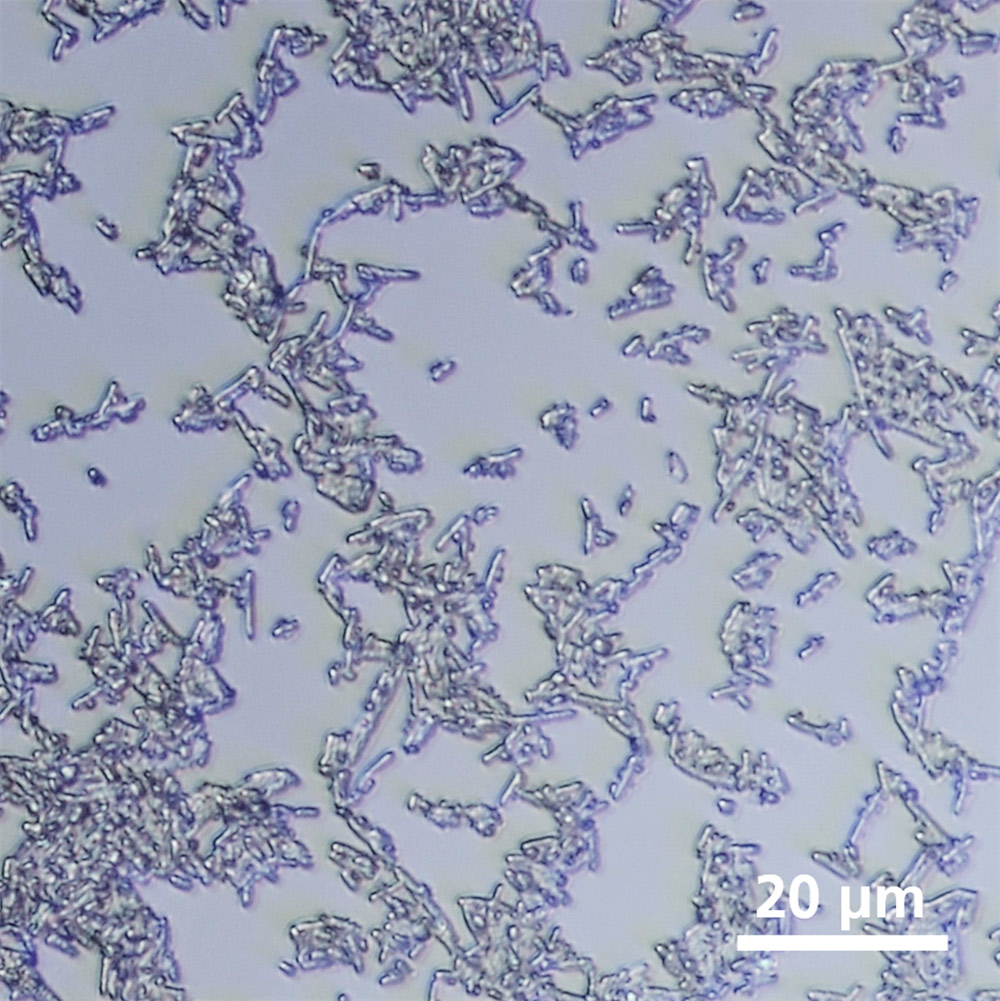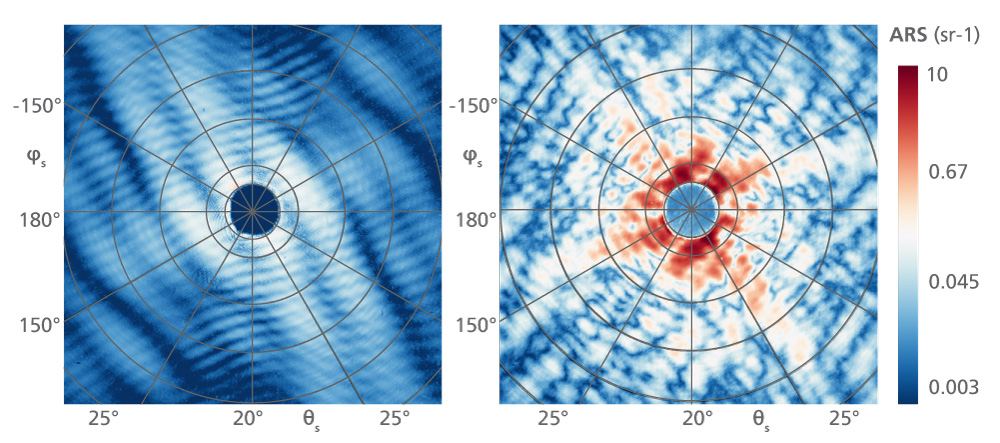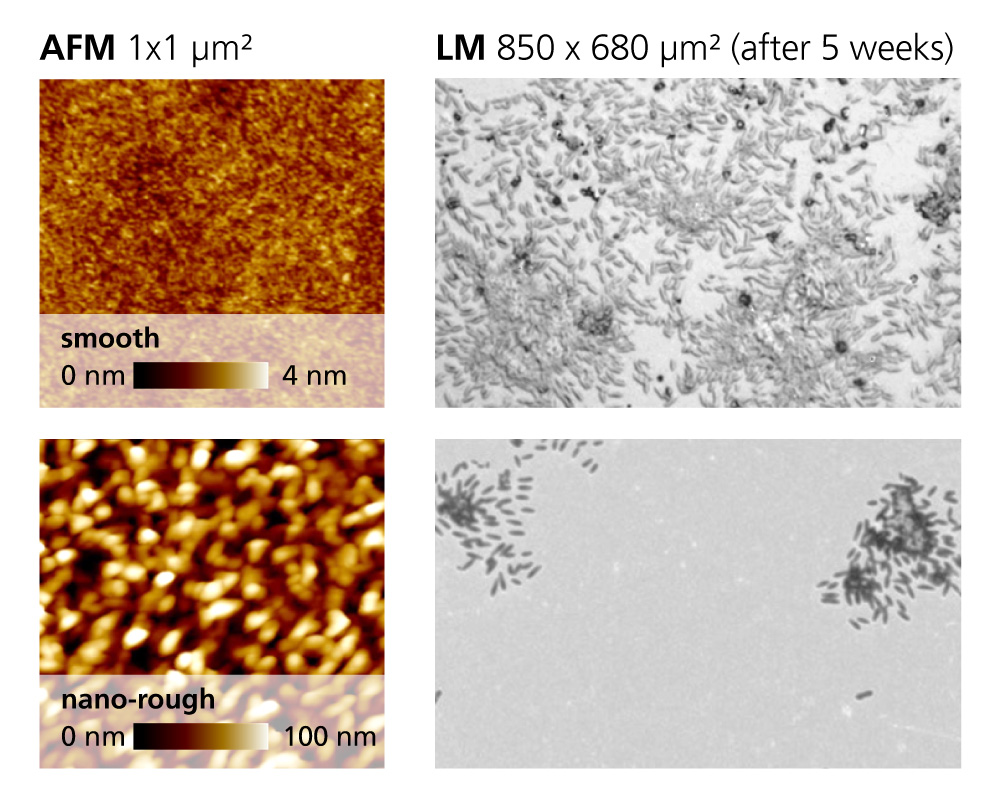


Biological cells react highly sensitively to other cells and materials. The material and surface properties decisively influence how well tissue grows around an implant for example, or how quickly and strongly bacteria adhere to surfaces and thus create biofilms. Depending on the application, different growth behavior affects the risk of infection (e.g. in medical products) or the functionality (e.g. the growth of biofilms on optical components). Due to the threatening spread of multi-resistant pathogens, inherently bactericidal surfaces are crucial.
Defined structuring and chemical functionalization, as realized at Fraunhofer IOF, can have a specific impact on the colonization of cells on surfaces. However, the correlations are complex and possible influential factors are diverse. A comprehensive pool of efficient and powerful analysis methods is therefore essential for the development and manufacturing of bio-functional surfaces. By combining topographic, functional, and light scattering characterization methods at Fraunhofer IOF, the specific properties of a surface can be analyzed individually, and their correlations to each other comprehensively clarified. The power spectral density is determined to describe the topography of a surface. This function contains information on the vertical and lateral distribution of the roughness components and allows the connection of roughness, wetting, and optical properties. In contrast to the usual approach, this enables the influence of various structural components on the wetting and bacterial adhesion behavior to be selectively evaluated. The first investigations on various nano-rough, micro-rough, and combined nano- and micro-rough surfaces demonstrated a significant impact of certain structural parameters on wetting and bacterial colonization (Fig. 3).
At Fraunhofer IOF, angle-resolved light scattering is used in combination for the characterization of such structures. A new innovative scatter-based system has now been realized that specifically allows the detection and analysis of bacteria and other biological cells. Thus, a surface and its colonization by cells can be analyzed simultaneously (Fig. 2).
Authors: Anne-Sophie Munser, Luisa Coriand, Nadja Felde, Sven Schröder
